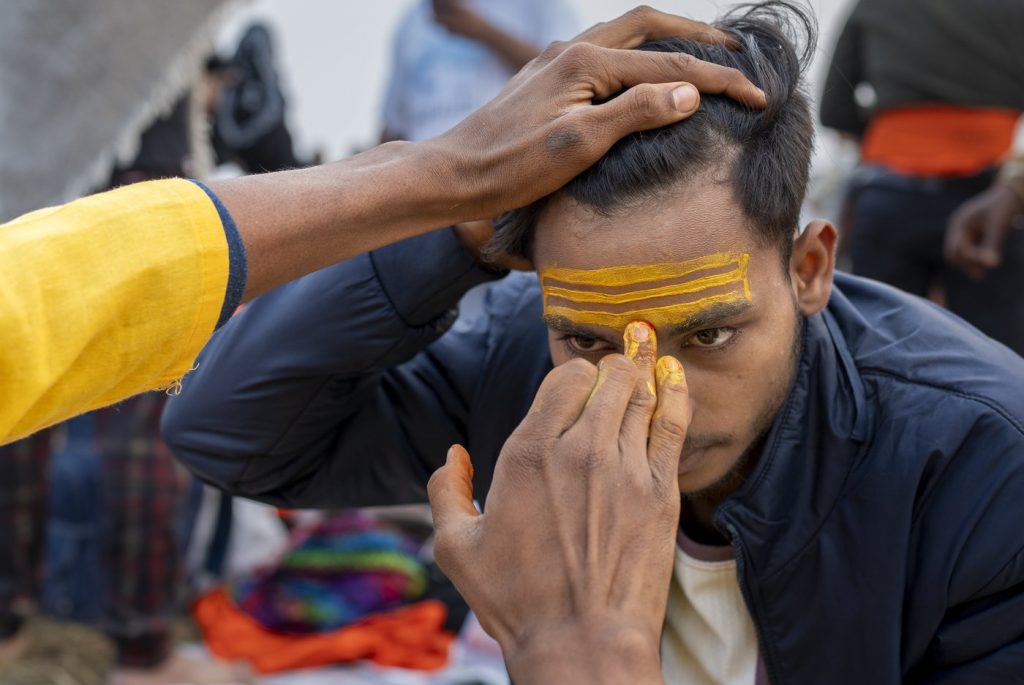PRAYAGRAJ, India (AP) – The Maha Kumbh festival in Prayagraj, India, is a remarkable gathering of millions of Hindu pilgrims who converge at the sacred confluence of the Ganges, Yamuna, and mythical Saraswati rivers. The festival, which began on January 13, 2025, and runs for six weeks, serves as a spiritual journey where participants hope that bathing in the holy waters will cleanse their sins and grant them salvation. An essential aspect of this pilgrimage is the application of tilak, a sacred mark placed on the forehead by Hindu priests, symbolizing divine connections and spiritual completion.
Tilak, made from sandalwood paste, turmeric, and sacred ashes, varies in design and significance among the diverse communities within Hinduism. Each type of tilak signifies different deities and holds unique symbolic meaning, showcasing the festival's embrace of the plurality within Hindu traditions. As approximately 400 million pilgrims, many from rural regions of India, participate in the festival, the presence of tilak becomes a collective identifier, transcending caste and class boundaries.
According to Hindu priest Shiv Kumar Pandey, the application of tilak follows the sacred bathing ritual, making it vital for fulfilling the pilgrimage. He emphasizes the importance of this practice, stating, “Wash away your sins all you want, and do all the good deeds, but if you don’t put a tilak on your forehead after bathing, everything goes to waste.” At this festival, the tilak serves not just as a cultural symbol but also as a spiritual safeguard, aimed at protecting and purifying both the mind and body.
Various artistic designs of the tilak are visible among the pilgrims, ranging from simple vermilion dots to intricate patterns with yellow lines or symbols related to Hindu deities, such as Lord Shiva and Ram. The priests, like Pandey, are busy dipping their fingers in traditional pastes and stamping the foreheads of devotees with these significant marks, which they often receive in return for small monetary offerings, food items, or other tokens of gratitude.
Each pilgrim carries personal stories and beliefs about the significance of their chosen tilak. For instance, Sushila Chauhan, who participated in the festival with a large family group, explains her choice of the word "Mahakal," a reference to Lord Shiva, stating, “Because he is the god of the three worlds.” She articulates the peace and concentration she feels from wearing the tilak, underscoring its role as a symbol of her faith.
Despite the joyous and spiritual atmosphere, the festival has not been without challenges. A tragic stampede on January 11, 2025, resulted in the loss of 30 lives, highlighting the intense crowd dynamics at such massive gatherings. Safety measures remain crucial as millions flock to partake in the rituals at the river’s edge, chanting prayers and splashing water in their rites of purification.
The Maha Kumbh festival is not just a religious event; it signifies the profound cultural tapestry of Hinduism and evokes a sense of belonging among millions. Each act of devotion—from the sacred dip in the rivers to the application of tilak—represents a journey of faith, connecting individuals to their spirituality and to each other in a shared experience of cultural heritage and collective hope.










